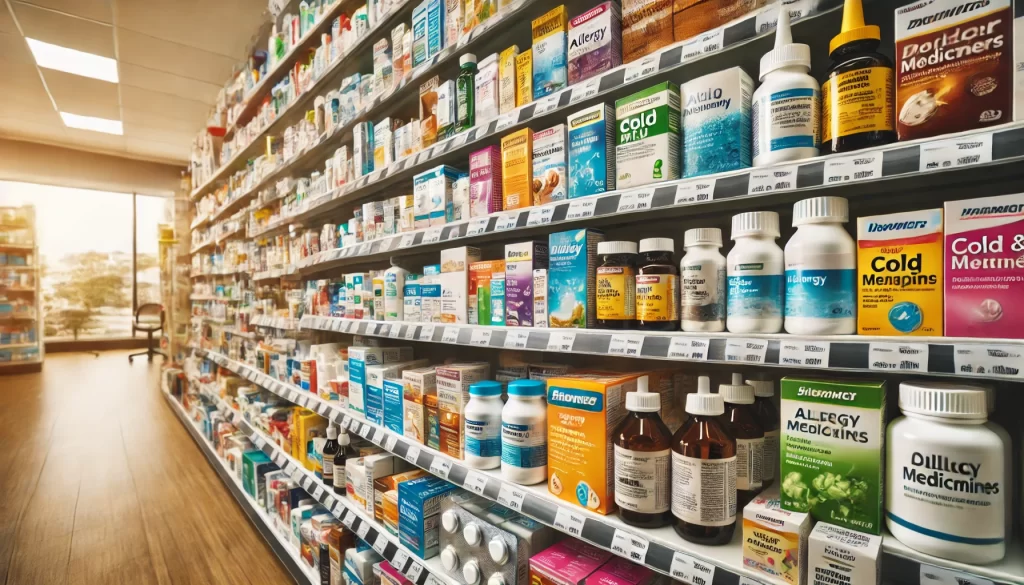
What you should know.
The cost of prescription medications is almost constantly in the news. It has even become a topic of debate in the current presidential elections. Americans spend over $500 billion annually on prescription medications. This includes drugs covered by insurance, and out of pocket costs and specialty drugs for chronic conditions.
But this is not the only expense Americans have for drug related health care items. Almost $90 billion a year is spent on nonprescription preparations.
The shelves of pharmacies, health food stores and convenience stores are lined with a vast array of vitamins, supplements, patent medicines, herbal preparations, and homeopathic medications. They are also available from hundreds of online sources, both reputable and of questionable origin.
Many people turn to these products in the hope of improving their health, boosting their immune systems, or addressing specific ailments. However, the development, testing, approval processes, and regulation of these products can be confusing, even for the most educated consumer. We will delve into each of these classes of health products, exploring how they are developed, tested, and regulated, and highlighting some potential drawbacks of which you should be aware.
Vitamins and Dietary Supplements
Development and Testing
Vitamins and dietary supplements include a broad range of products such as vitamins, minerals, amino acids, and other nutritional components. These products are typically developed through a combination of scientific research and commercial interest. Manufacturers may isolate nutrients from food sources or create them synthetically. Testing often involves ensuring that the products contain the stated ingredients in the correct amounts. However, unlike pharmaceuticals, these products are not usually subject to rigorous clinical trials to prove efficacy and safety before they are marketed.
Approval Process
In the United States, vitamins and dietary supplements are regulated by the Food and Drug Administration (FDA) under the Dietary Supplement Health and Education Act (DSHEA) of 1994. Under DSHEA, manufacturers are responsible for ensuring the safety and labeling of their products before they reach the market. However, the FDA does not approve dietary supplements before they are sold. Instead, the FDA can take action against any supplement that is found to be unsafe once it is on the market.
Drawbacks
One of the primary drawbacks of dietary supplements is the lack of pre-market approval, which means that the burden of proving safety is often on the consumer or the FDA post-market. This can lead to situations where unsafe or ineffective products remain on the market until sufficient adverse events are reported. Additionally, the quality of supplements can vary widely between manufacturers, and contamination with other substances is a known risk. Although, given the competitive nature of these products and the number of distributors, questionable products are usually forced out of the market early.
Herbal Preparations
Development and Testing
Herbal preparations include products made from plants or plant parts, used for their supposed medicinal or therapeutic properties. The development of these products is often rooted in traditional medicine practices, although modern herbal preparations may undergo some degree of scientific research. Testing for herbal preparations can vary widely; some are backed by clinical studies, while others rely on anecdotal evidence or traditional use.
Approval Process
The FDA considers herbal supplements as foods, not medicines. So, they are not subject to the same testing, manufacturing, and labeling standards and regulations as medicines.
This means they do not require pre-market approval by the FDA. However, in other parts of the world, such as Europe, herbal products may undergo more rigorous testing and regulation. All herbal products that display an intended use must be accompanied by a box warning stating: “These statements have not been evaluated by the Food and Drug Administration. This product is not intended to diagnosis, treat, cure or prevent any disease.”
Drawbacks
The primary concerns with herbal preparations are the variability in potency and the potential for contamination or adulteration with other substances. Additionally, the lack of standardization in the preparation of herbal products can lead to inconsistent effects. Herbal supplements, unlike medicines, do not need to be standardized to make sure of batch-to-batch consistency. Some herbs can also interact with prescription medications, leading to adverse effects.
Homeopathic Medications
Development and Testing
Homeopathic medications are based on the principle of “like cures like,” where substances that cause symptoms in a healthy person are believed to cure similar symptoms in a sick person when taken in highly diluted forms. The development of homeopathic remedies typically involves diluting a substance repeatedly until little to no trace of the original substance remains.
While counterintuitive, homeopaths believe that a homeopathic medicine is more powerful the more times the active ingredients have been diluted. A 6X potency indicates that the drug has been diluted at a ratio of 1 to 10 for a total of six times. A C potency means the dilution ratio is 1 to 100. The higher the numeral, the lower the concentration of active ingredients in the medicine.
Testing in homeopathy is controversial, as traditional scientific methods, such as randomized controlled trials, often find no evidence that homeopathic remedies are more effective than a placebo. Some supporters claim that homeopathic remedies are developed for a specific patient making general testing irrelevant.
Approval Process
In the U.S., homeopathic medications are subject to regulation by the FDA under a different framework compared to dietary supplements. Historically, these products were allowed to be sold without pre-market approval as long as they were prepared according to the guidelines of the Homeopathic Pharmacopeia of the United States (HPUS) and the FDA’s Good Manufacturing Practices. All products are required to be clearly marked as “homeopathic”. In recent years, the FDA has increased scrutiny of homeopathic products, particularly those marketed for serious conditions, or containing potentially harmful ingredients, as well as those for eye conditions, and all homeopathic injectables.
Drawbacks
The major drawback of homeopathic medications is the lack of scientific evidence supporting their efficacy. Most scientific reviews and clinical trials have found that homeopathic remedies do not perform better than placebos. Moreover, because homeopathic products are so highly diluted, they are generally considered safe, but they may delay patients from seeking effective medical treatments for serious conditions.
Patent Medicines
History and Evolution
Patent medicines have a colorful history. They began in the 19th century and were popular into the early 20th century before evolving into the over-the-counter industry that we now know. This class includes many modern over the counter medications produced by reputable drugs companies and also medications of dubious quality and effectiveness produced in garages and basements.
In the late 19th and early 20th centuries, medicine wagons and medicine shows became popular vehicles for the promotion and sale of patent medicines. These traveling shows often combined entertainment with health claims, featuring acts such as music, magic tricks, and even wild west performances. At the center of the spectacle, a charismatic “doctor” or salesman would tout the benefits of their patent medicine—a proprietary formula claimed to cure a wide range of ailments.
Patent medicines of this era were largely unregulated, and their ingredients were often a secret. Some contained alcohol, opium, or other stimulants, which provided temporary relief or a placebo effect. Because there were few laws governing their production and sale, these concoctions could be marketed without scientific proof of their efficacy or safety.
Medicine shows traveled to rural and urban areas alike, attracting customers who had little access to conventional medicine, particularly those in remote regions. Unfortunately, these products were often ineffective or even dangerous. The rise of the Pure Food and Drug Act of 1906, which required the labeling of ingredients and restricted misleading claims, signaled the decline of these shows and the broader patent medicine industry.
A few of the original patent medicines stayed on the market until the late 20th century. The most famous of these was Carter’s Little Liver Pills which was touted for curing headaches, constipation, dyspepsia and biliousness. Lydia Pinkham’s Vegetable Compound which was sold for “female complaints “, is still on the market though it has been significantly reformulated. A number of medications on the market now could be considered as the descendants of early patent medicines, perhaps the best known of these is Geritol
Approval Process
Modern patent medicines fall into the category of over the counter (OTC) drugs. Preparation of these medicines must either follow a monograph established by the FDA (essentially a recipe book) or undergo New Drug Application (NDA) process. All patent medicines must comply with strict labeling standards and include accurate ingredient lists, dosage instructions, and warnings. Any health claims must be supported by scientific evidence.
Drawbacks
There are several drawbacks to over the counter (patent) medications. There’s a significant risk that people may intentionally take more than the recommended doses. This is particularly dangerous with some medications such as Tylenol which can lead to liver damage. People may use medications for a longer than the recommended period. They may also be used in an attempt to treat conditions for which they are not intended. They may mask symptoms of a more serious condition leading to a delay in seeking appropriate medical care.
Conclusion
Vitamins, supplements, herbal preparations, patent medicines and homeopathic medications each occupy a unique space in the health and wellness industry. While they offer consumers more choices in managing their health, the differences in how these products are developed, tested, and regulated are significant. As a consumer, it’s essential to be informed about these differences to make safe and effective choices.

I’d like to thank my friend Steve Kaplan, a Registered Pharmacist, who is also my coauthor for this post.

Leave a Reply